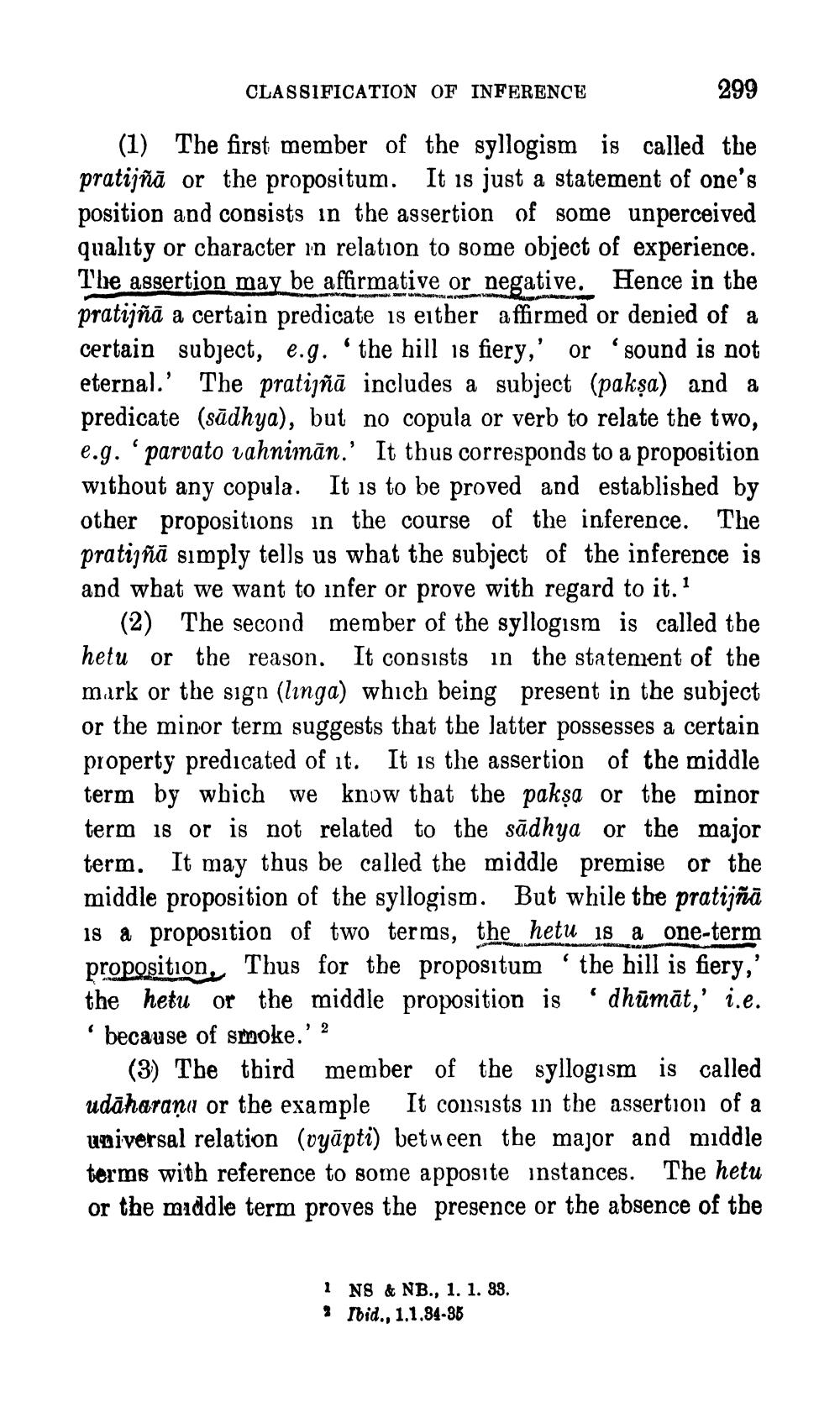________________
CLASSIFICATION OF INFERENCE
299
(1) The first member of the syllogism is called the pratijñā or the propositum. It is just a statement of one's position and consists in the assertion of some unperceived quality or character in relation to some object of experience. The assertion may be affirmative or negative. Hence in the pratijñā a certain predicate is either affirmed or denied of a certain subject, e.g. 'the hill is fiery,' or 'sound is not eternal.' The pratijñā includes a subject (pakşa) and a predicate (sūdhya), but no copula or verb to relate the two, e.g. parvato vahnimān.' It thus corresponds to a proposition without any copula. It is to be proved and established by other propositions in the course of the inference. The pratijñā simply tells us what the subject of the inference is and what we want to infer or prove with regard to it."
(2) The second member of the syllogism is called the hetu or the reason. It consists in the statement of the mark or the sign (linga) which being present in the subject or the minor term suggests that the latter possesses a certain property predicated of it. It is the assertion of the middle term by which we know that the pakṣa or the minor term is or is not related to the sādhya or the major term. It may thus be called the middle premise or the middle proposition of the syllogism. But while the pratijñā 18 a proposition of two terms, the hetu 18 a one-term proposition, Thus for the propositum 'the hill is fiery,' the hetu or the middle proposition is 'dhūmāt,' i.e. 'because of smoke.' ?
(3) The third member of the syllogism is called udāharanı or the example It consists in the assertion of a universal relation (vyāpti) between the major and middle terms with reference to some apposite instances. The hetu or the middle term proves the presence or the absence of the
1 NS & NB., 1. 1. 93. 3 Ibid., 1.1.34-36




